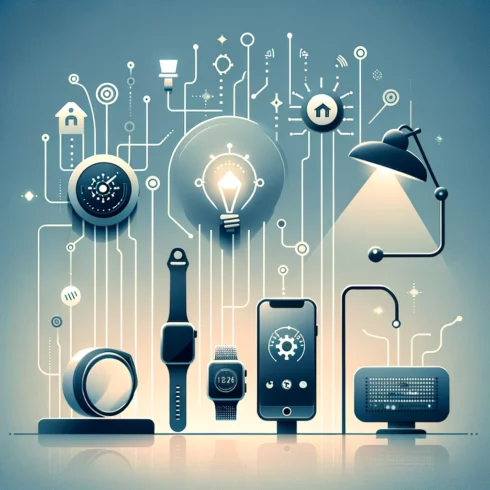
The landscape of IoT devices is transforming, marked by a fundamental evolution toward software-driven innovation. In this era, the paradigm of Software-Defined IoT devices is redefining traditional notions, where software supremacy over mechanical hardware unleashes a wave of dynamic, upgradable smart devices embedding distributed intelligence.
Visionary OEMs are at the forefront of this transformation, harnessing the power of software to revolutionize their offerings, paving the way for diverse advancements and a spectrum of opportunities.
Emergence of Tailored, Dynamic Products
The foremost advantage of a software-defined approach in embedded devices lies in adopting an agile process, where a product can iterate and evolve quickly, and its features can augment seamlessly post-production.
For instance, it allows crafting tailored products that resonate deeply with niche markets, showcasing an era of hyper segmentation at a fast pace. Zebra Technologies serves as an example, personalizing printers for industry giants like UPS and FedEx, illustrating the potent flexibility of software in meeting specific customer needs.
Another example is post-purchase service additions, akin to mobile apps but in the IoT industry context, paving the way for innovation. Landis+Gyr’s Revelo electricity meter, customizable to efficiently manage distributed energy resources like solar panels or electric vehicles, exemplifies this evolution in providing adaptable solutions for changing energy needs.
The infusion of value-added applications and services elevates the intrinsic worth of products. Smart wearable devices (such as smartwatches, smart rings, and smart bands) leverage software functionalities, like actionable data, to offer diverse health monitoring capabilities. These devices continuously integrate new features, apps, and healthcare system integrations through a software-defined approach, empowering users to manage their well-being proactively.
Transitioning challenges
Transitioning from traditional waterfall software development models presents substantial challenges. Agile frameworks supporting rapid validations on simulated devices through shorter iteration cycles are essential, necessitating a departure from rigid development methodologies. Additionally, integrating legacy systems seamlessly with agile software development remains an obstacle.
Resource constraints and cost considerations compound these challenges. Moving from resource-optimized embedded development models to software-defined approaches traditionally increased costs due to the requirement for sophisticated processors and modern development tools. However, newer solutions on the market offer the same functionalities as high-level OS but on a much lighter and optimized footprint to run on microcontrollers and microprocessors, saving up costs while keeping the same ease of use as high-end operating systems.
Software containers in this IoT world
Software containerization is a major trend reshaping the development and deployment of applications, particularly in the context of edge computing. Its ability to facilitate faster application development and deployment, coupled with heightened portability and flexibility, marks a significant shift toward the desired state of “write once, run anywhere.”
While initially considered too bulky and inefficient for embedded systems operating with 32-bit microcontrollers and real-time operating systems (RTOSs), recent advancements have shattered these limitations. Tailored container versions designed for smaller CPUs running an RTOS are emerging, effectively bridging the gap for embedded systems.
These app containers deliver numerous benefits highly relevant in the IoT industry:
- Isolation: App containers securely isolate apps from the underlying OS/RTOS, creating a fortified software architecture that ensures a more secure environment. This architecture fosters higher software portability, guarantees consistent app operation across diverse environments, enables safe integration of third-party apps, enhances device reliability, and allows leveraging legacy software assets and IPs.
- Standardization: As software gains increasing importance in IoT devices, complexity rises due to fragmented technological environments and diverse configuration challenges. The need for standardization becomes more crucial. Given the scale, ranging from millions to billions of electronic devices worldwide, containers can play a huge role due to their flexibility, ease, and consistency in deployment—attributes akin to why they gained popularity in the IT and smartphone contexts.
The shift to a software-defined landscape represents a pivotal change driven by industry needs and the surge in data. It demands sophisticated software algorithms and seamless AI/ML integration, empowering interconnected edge devices with unparalleled computational capabilities. Simultaneously, consumer expectations, shaped by the smartphone era, fuel the desire for uniform functionalities across diverse interconnected devices.
This transformation demands proactive adaptation and innovation. Embracing a software-first approach and leveraging app containers emerges as the fastest, most cost-effective route. Placing software at the core fosters a culture of continuous improvement and rapid innovation.
Beyond technological advancements, the software-defined approach heralds an era of adaptable technology that enriches our lives through embedded intelligence, continual enhancements, and an environment fostering swift innovation. It not only revolutionizes devices but also dynamically shapes our interactions and experiences with everyday objects. Embracing this shift opens doors to a world where technology evolves alongside us, propelling us toward a future where innovation knows no bounds.





